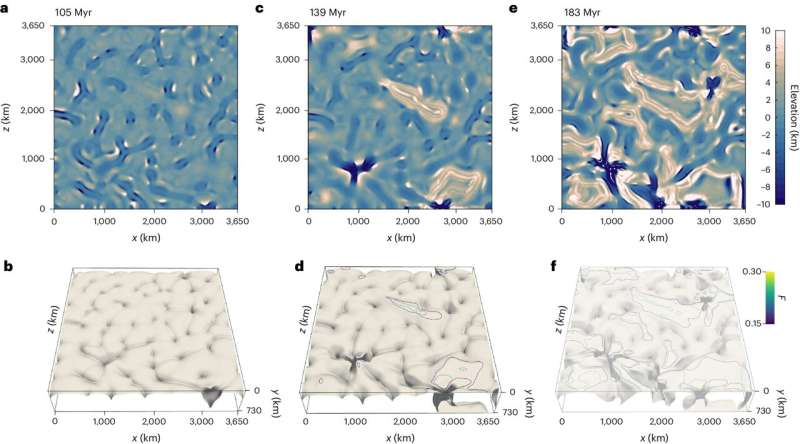This article has been reviewed according to Science X's editorial process and policies. Editors have highlighted the following attributes while ensuring the content's credibility:
fact-checked
peer-reviewed publication
trusted source
proofread
Venus' 'continents' suggest surprising link to early Earth

New research has revealed that Venus, often considered Earth's inhospitable twin, may share a surprising geological history with our own planet.
Scientists have discovered that Venus' vast plateaus, known as tesserae, may have formed through processes similar to those that created the Earth's earliest continents billions of years ago.
The international study, led by Associate Professor Fabio Capitanio from the Monash University School of Earth, Atmosphere and Environment,in collaboration with NASA, is published in the journal Nature Geoscience.
"The study challenges our understanding of how planets evolve," Associate Professor Capitanio said.
"We did not expect Venus, with its scorching 460°C surface temperature and lack of plate tectonics, to possess such complex geological features."
Using high-performance computer simulations and data from the Magellan spacecraft, researchers modeled the formation of Ishtar Terra, Venus' largest plateau.
The results suggest that Ishtar Terra and other tesserae may have risen from the planet's hot interior through a process similar to the formation of Earth's cratons—the ancient cores of our continents.
"This finding provides a fascinating new perspective on Venus and its potential links to early Earth," Associate Professor Capitanio said.
"The features we found on Venus are strikingly similar to Earth's early continents, suggesting that the dynamics of Venus' past may have been more similar to Earth's than previously thought."
Understanding how these "continents" formed on Venus could shed light on the evolution of rocky planets, including our own.
Earth's cratons hold crucial clues about the emergence of topography, atmosphere, and even life.
"By studying similar features on Venus, we hope to unlock the secrets of Earth's early history," Associate Professor Capitanio said.
"Our research has paved the way for future missions to Venus, such as DAVINCI, VERITAS, and EnVision.
"These missions will provide further insights into Venus' geological history and its connection to Earth."
More information: Capitanio, F.A., et al. Ishtar Terra highlands on Venus raised by craton-like formation mechanisms. Nature Geoscience (2024). DOI: 10.1038/s41561-024-01485-3
Journal information: Nature Geoscience
Provided by Monash University




















